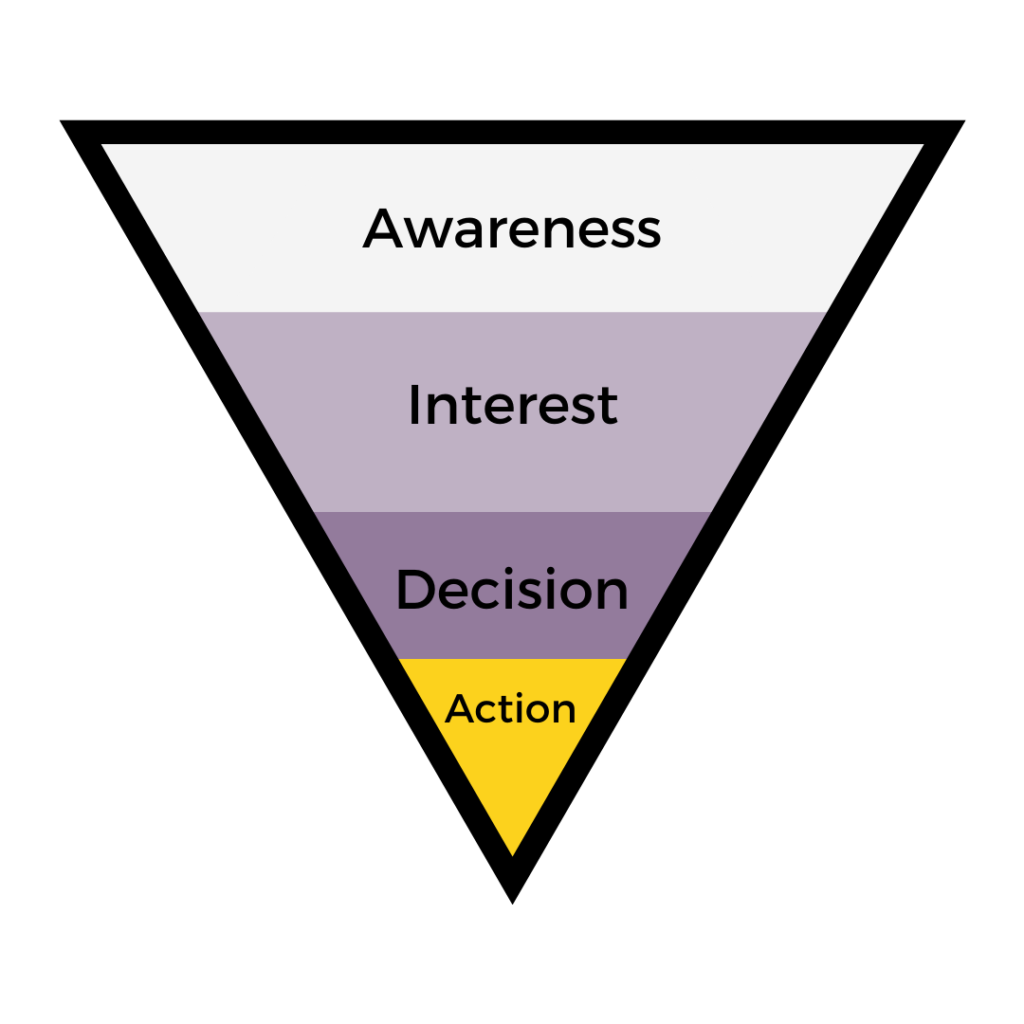Create a captivating homepage
Your homepage is the most important page on your website because it is the first page people see (most of the time).
It’s the first impression, and you’ve got about 3 seconds, to make a good one.
All the pages of your website must lead toward the main objective of your website (to sell products or get enquiries for example) and your homepage is the very top of this funnel.
Your homepage must make visitors aware of what you have to offer and communicate how it is more helpful, better value, or more desirable, than the rest.
The visitor then decides whether they’re interested and clicks on a link to learn more, or they bounce off the site, never to return.
But don’t worry, it’s not as scary as it sounds. There are a few things you can do, to make sure your website visitors click instead of bounce.
1. Write an attention-grabbing headline
The very first thing your customers see is your headline. This is your chance to demonstrate that they’ve come to the right place and you’ve got the solution they’re searching for.
A great headline explains what the customer will get out of visiting your site.
Use a tried and tested formula to create your headline
Verb: Start by using a verb to describe to the customer what they can do (Discover / Create / Deliver / Get / Add / Develop / Design)
Object: Clearly say what you offer
Problem: Explain how you can solve a problem.
Here’s an example I created for a smoothie company:
Discover 100% Natural, ready-to-blend smoothies and boost your vitality!
Verb: Discover
Object: Smoothies
Problems Solved:
100% Natural (some smoothies contain refined sugar, artificial colours and flavors)
Ready to Blend (smoothies can be messy and an effort to make)
Boost your vitality (not getting enough vitamins and minerals each day can lead to a lack in energy)
You don’t need to solve all your customer’s problems in a sentence but you do need to seem helpful enough that they want to click into your site, to learn more.
2. Use a sub-heading to explain a bit more
You might find that you need to explain a bit more, so you could include a sub-heading or a short intro paragraph to answer a couple more questions your customers may have in mind.
With our smoothie example above, perhaps the reader is thinking, “Are they expensive?” Or “Where do I get them from?”.
A subheading could be:
From just $5 per smoothie, delivered to your door.
3. Create obvious calls to action
The visitor is aware of what you have to offer and they’re interested. Make it easy for them to take the next step with a “Call-to-Action” button.
This should be bold or bright so it stands out on the page.
Use a verb in your call to action, such as:
“Learn more”
“Click here”
“Start Now”
“Shop”
4. Keep convincing ‘below the fold’
So far, everything we’ve talked about, your headline, sub headline and call to action, should be viewable straight away, without having to scroll down. This is “above the fold”.
The content you need to scroll down to see is considered to be “below the fold”.
Visitors to your site may not be persuaded to take action straight away, but if they are intrigued enough to scroll down, you’ve still got their attention.
The content below the fold should continue to convince the visitor that what you have to offer is better value, more helpful, or more desirable than the competition.
You could feature:
Popular products and services
Testimonials to build credibility
The unique benefits you have to offer
An explainer video
Your instagram feed.
Include appropriate call-to-action buttons throughout the page to encourage the visitor to take the next step through your site.
If you’re not sure if your homepage is as captivating as it could be, get in touch! We can take a look at the copy, images and user experience, as well as the SEO and performance of your website and give you some tips for improvement.


